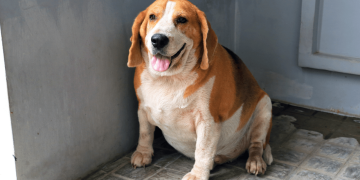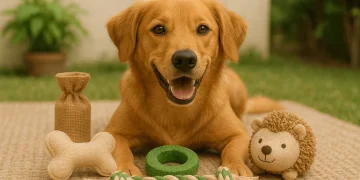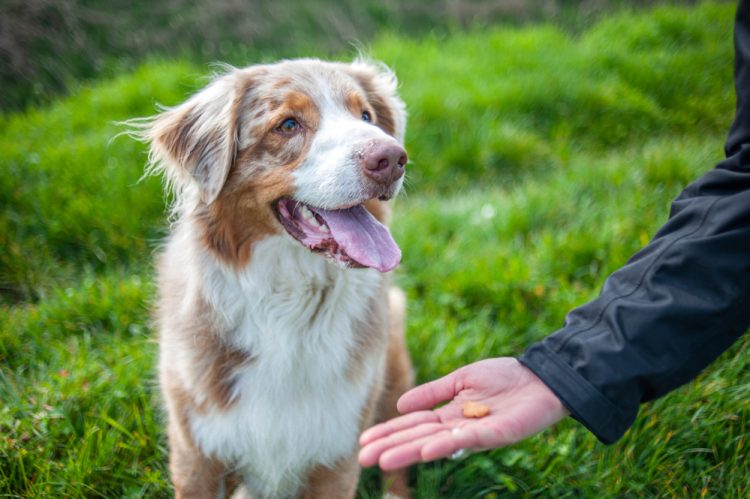Training your pet can be one of the most rewarding experiences for both you and your furry companion. But traditional training methods that involve punishment or negative reinforcement often lead to confusion, fear, and unwanted behaviors. Instead, positive reinforcement offers a more effective, humane, and compassionate approach. By using praise, treats, and rewards, you can shape your pet’s behavior in a way that strengthens your bond and encourages long-lasting positive behaviors. In this article, we’ll explore the power of positive reinforcement in training and how you can apply it to teach your pet new skills and correct undesirable behaviors.
1. What is Positive Reinforcement?
Positive reinforcement is a training technique that focuses on rewarding desirable behaviors to encourage their repetition. In simple terms, it means giving your pet something they value when they exhibit a behavior you want to reinforce. Over time, your pet will begin to associate the desired behavior with the reward, making them more likely to repeat it.
For example, if you want to train your dog to sit on command, you would reward them with praise or a treat every time they successfully sit when asked. Positive reinforcement can be applied to both dogs and cats, as well as other pets like rabbits, birds, and even ferrets.
1.1. The Science Behind Positive Reinforcement
The principle behind positive reinforcement is based on operant conditioning, a psychological concept developed by behaviorist B.F. Skinner. In this theory, behaviors that are followed by pleasant consequences (rewards) are more likely to be repeated, while behaviors that are followed by unpleasant consequences (punishment) are less likely to recur.
When you reward your pet for a desired behavior, you are reinforcing the connection between that behavior and the reward, creating a positive cycle of learning. This method promotes a strong, trusting relationship between you and your pet, as opposed to methods that use punishment, which can lead to fear, anxiety, and aggression.
2. Why Positive Reinforcement Works
Positive reinforcement works for several reasons. First and foremost, it creates a positive learning environment where pets feel safe and motivated. Rather than focusing on what your pet is doing wrong, you’re directing their attention to what they’re doing right. Here are a few key reasons why positive reinforcement is so effective:
2.1. Builds Trust and Strengthens the Bond
Pets are more likely to trust and bond with their owners when they associate training sessions with positive experiences. Using rewards encourages them to want to engage with you and cooperate during training. Over time, your pet learns that good things happen when they listen and follow your cues.
2.2. Reduces Stress and Anxiety
Punishment-based training methods can create stress, anxiety, and confusion for your pet. This can lead to behavioral issues, such as fear-based aggression or separation anxiety. Positive reinforcement, on the other hand, builds confidence and promotes calmness, allowing your pet to feel secure in their environment.
2.3. Enhances Learning and Retention
Pets learn faster when they’re motivated by rewards. Positive reinforcement increases the likelihood that your pet will remember and repeat the desired behavior because they associate the action with something enjoyable. This technique encourages pets to stay engaged and focused during training sessions.
2.4. Improves Behavior Over Time
The more consistent you are with rewarding good behavior, the more likely it is that your pet will continue exhibiting those behaviors. Whether you’re training a new puppy to sit or reinforcing house training with an older dog, positive reinforcement ensures that your pet’s behavior improves over time.

3. How to Use Positive Reinforcement in Training
Positive reinforcement can be used for a wide range of behaviors, from teaching basic commands like “sit” and “stay” to managing behavioral issues like jumping up or barking excessively. Here are some essential tips for using positive reinforcement effectively:
3.1. Use Timely Rewards
Timing is crucial in positive reinforcement. To make sure your pet connects the behavior with the reward, give them the reward immediately after they exhibit the desired behavior. For instance, if you’re teaching your dog to sit, reward them with a treat the moment their bottom touches the ground. This ensures they understand what action is being rewarded.
3.2. Choose the Right Rewards
Not all pets are motivated by the same rewards. Some pets respond well to food treats, while others may prefer toys, praise, or physical affection. It’s important to find out what motivates your pet the most and use that as a reward. For example, some cats may enjoy a little extra playtime with a feather wand, while others may prefer a small treat.
3.3. Be Consistent
Consistency is key when using positive reinforcement. Make sure you reward the same behavior every time it happens, especially during the early stages of training. If you only reward the behavior sporadically, your pet might become confused about what is expected of them. Consistent reinforcement helps solidify the behavior in your pet’s mind.
3.4. Keep Training Sessions Short and Fun
Pets, especially dogs and cats, have limited attention spans. Training sessions should be short (10-15 minutes) to keep your pet engaged and prevent them from getting overwhelmed. If your pet starts to lose interest, take a break and try again later. Make training fun by incorporating playtime, toys, and praise to keep your pet motivated.
3.5. Gradually Increase the Difficulty
As your pet masters basic commands, you can gradually increase the difficulty of the tasks. For example, once your dog learns to sit, you can add distractions (like toys or other people) to test their ability to stay focused. You can also extend the duration or add more complex commands to challenge your pet and keep training interesting.
4. Common Mistakes to Avoid
While positive reinforcement is a highly effective training method, it’s important to avoid common mistakes that can hinder progress. Here are a few pitfalls to watch out for:
4.1. Overusing Rewards
While rewards are essential for positive reinforcement, it’s important not to overdo it. Giving too many treats can lead to unhealthy weight gain, and over-rewarding can cause your pet to become reliant on treats. Gradually phase out food rewards and replace them with praise, toys, or other forms of positive reinforcement as your pet learns the behavior.
4.2. Inconsistent Rewards
If you reward your pet inconsistently, they may become confused and frustrated. For example, if you reward your dog for sitting one time but not the next, they might not understand what they’re being asked to do. Be consistent with your rewards, especially during the initial stages of training.
4.3. Punishing Mistakes
Positive reinforcement focuses on rewarding good behavior rather than punishing bad behavior. Punishing your pet for mistakes or missteps can lead to fear, stress, and confusion. Instead, redirect your pet’s behavior and reinforce the desired action when they make progress.
5. Conclusion: The Power of Positive Reinforcement
Training your pet using positive reinforcement is one of the most effective, humane, and enjoyable methods for building a strong, trusting relationship with your companion. By using praise, treats, and rewards, you can help your pet learn new skills, reinforce good behaviors, and address unwanted actions in a way that fosters confidence and respect.
Remember, training takes time and patience. Be consistent, use appropriate rewards, and always make learning fun for your pet. The results will not only improve your pet’s behavior but will also strengthen the bond between you and your furry friend.























































